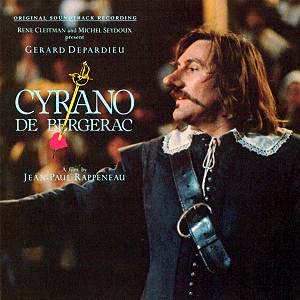sillyflower
Posts: 3509
Joined: 8/4/2010
From: Back in Blighty
Status: offline

|
I have just spent 40 mins typing this post only to be timed out  , so am trying again with frequent saving, hoping that I can remember what I wrote.... , so am trying again with frequent saving, hoping that I can remember what I wrote....
loss ratios part 2
The hard part is knowing what a good loss ratio is. For G, 5:1 before the 1st blizzard is good, but that would be rubbish for the 1st 5 turns. My rule of thumb (which I have just invented for this post) is 4:1 is good for G in '42 and less than 3:1 is good for R. If your ratio is good, then obviously the higher actual totals the better, and the opposite applies if the ratio is poor. In '43, 2.5 to 1 is likely to be good for G. These numbers are roughly based on comparative replacement rates and should be seen only as a starting point. For example, for G, captives make HIWIs which add to G replacements which has the same effect as lowering G losses.
However, loss ratios are not everything even though they are usually the key to eventual victory. After all in chess (which is the game where the loss ratio probably matters more than in any other) the sacrifice of a piece may be the key to eventual victory.
The successful player then has to know when sacrificing the loss ratio will lead to greater benefits in this or subsequent turns. In my experience, players are much more likely to attack to much rather than too seldom so perhaps the trick is to understand better when not to attack.As a R player, there is nothing I like to see than G being too aggressive in '42 or '43 -or later but so few games get into '44. Attacking R inf, especially in forts, will produce almost always a v. poor loss ratio for G. Of itself, this just weakens the axis and makes my task of grinding my way to Berlin so much easier. Some may say there is a morale benefit for the G in doing this. I disagree. It helps my morale a lot, and the weakening of the axis makes it easier for me to attack successfully; thus it's the soviets who end up with the greater morale benefit.
So when is attacking after '41 any good?
1 When it will give a good loss ratio. That doesn't have to be every turn. The best pockets very often take 2 or 3 turns to create
2 when there is some other benefit such as gaining useful ground or lots of baby or other factories in the area. Not all ground is of use. Regaining ground to buy time may be sensible especially if time is tight for the Bolsheviks to get a win.
3 If you just like attacking and don't care that much about any long term downside. It's only a game so there's no point if you don't enjoy playing it.
< Message edited by sillyflower -- 7/23/2017 12:43:32 PM >
_____________________________
web exchange
Post: I am always fearful that when I put this game down on the table and people see the box-art they will think I am some kind of neo-Nazi
Reply: They already know you're a gamer. What other shame can possibly compare?
|
 Printable Version
Printable Version












 ). Hanging onto 200+ VPs is therefore now my target which means I have a reason for carrying on other than just because Brian wants to. Of course, I am assuming that Brian will want to carry on for that long but he's refused earlier offers to give up.
). Hanging onto 200+ VPs is therefore now my target which means I have a reason for carrying on other than just because Brian wants to. Of course, I am assuming that Brian will want to carry on for that long but he's refused earlier offers to give up.
 , so am trying again with frequent saving, hoping that I can remember what I wrote....
, so am trying again with frequent saving, hoping that I can remember what I wrote.... 


 ) as I make another attempt to wipe them out. I meant to take screenshots of losses but forgot, but I think they were approx 26K to 85K; air 200 to 700 (I forgot to turn off ground support at the end of my previous turn). Over 2K AFVs destroyed and 2K trucks captured. Only other news: I spotted 2 rocket xx participating in an attack. I still haven't seen any regular arty divs, but that may be just inadequate study of Brian's attacks.
) as I make another attempt to wipe them out. I meant to take screenshots of losses but forgot, but I think they were approx 26K to 85K; air 200 to 700 (I forgot to turn off ground support at the end of my previous turn). Over 2K AFVs destroyed and 2K trucks captured. Only other news: I spotted 2 rocket xx participating in an attack. I still haven't seen any regular arty divs, but that may be just inadequate study of Brian's attacks.




 but it will get harder as the combat losses show the Brianites are getting better equipment in greater numbers. The soviets lost about 3K+ AFVs etc in 3 weeks but I'm sure there are inexhaustible reserve pools. However, hammering the tanks will keep the combat power of those units down as they lose morale and experience.
but it will get harder as the combat losses show the Brianites are getting better equipment in greater numbers. The soviets lost about 3K+ AFVs etc in 3 weeks but I'm sure there are inexhaustible reserve pools. However, hammering the tanks will keep the combat power of those units down as they lose morale and experience. 



 New Messages
New Messages No New Messages
No New Messages Hot Topic w/ New Messages
Hot Topic w/ New Messages Hot Topic w/o New Messages
Hot Topic w/o New Messages Locked w/ New Messages
Locked w/ New Messages Locked w/o New Messages
Locked w/o New Messages Post New Thread
Post New Thread